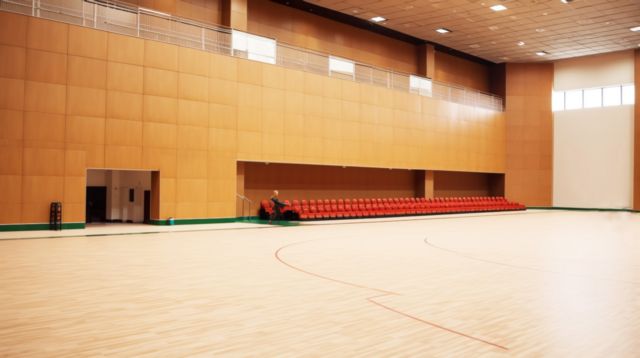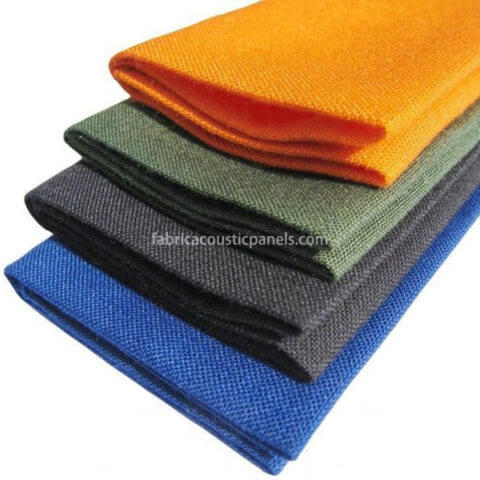I. Introduction
In today’s fast-paced and noisy environment, creating spaces with optimal sound quality and acoustics has become more critical than ever. From recording studios and conference rooms to home theaters and home cinemas, acoustic performance has a tremendous effect on overall experience – one key element in attaining excellent acoustic quality being the use of acoustic panels.
Acoustic panels are specifically designed to absorb and diffuse sound waves, decreasing echo and reverberation for an enjoyable auditory environment. While their core material plays a large part in their effectiveness, the material chosen as cover cloth also plays a crucial role.
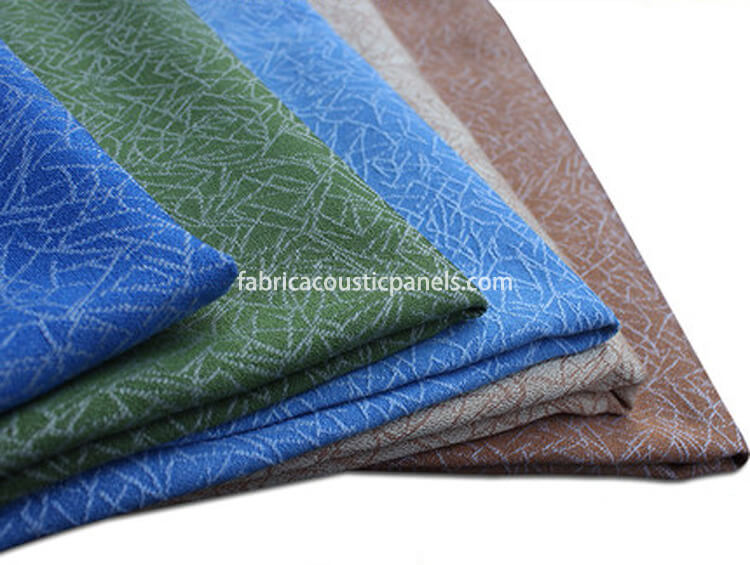
II. Understanding Acoustic Cloth
Acoustic cloth (commonly referred to as sound cloth or acoustical cloth) is specifically designed to enhance the sound quality of acoustic panels. Made of specially chosen transparent cloth material that offers ideal acoustical properties for passing sound through while minimising reflections, soundproofing cloth can help improve overall acoustical panel performance.
Soundproof cloth serves two essential purposes. First, it provides protection for an acoustic panel while simultaneously allowing sound waves to pass through it and interact with its absorptive material – increasing sound absorption and diffusion while ultimately leading to improved acoustic performance.
Benefits of Utilizing Acoustic Cloth in Panel Construction
Utilizing sound absorbing cloth in panel construction provides several key benefits, which we will outline here:
- Sound Absorption: Acoustic fabric cloth is designed to be acoustically transparent, meaning sound waves pass through without encountering much resistance from its absorptive material, which effectively captures and attenuates sound energy while attenuating echos and reverberations in any given environment. This allows it to effectively capture and attenuate noise thereby decreasing echoes and reverberations within spaces.
- Aesthetics: Acoustic cloth comes in various colors, patterns, and textures that allow it to blend seamlessly with various design aesthetics and interior decor schemes while at the same time concealing its inner workings. It provides an attractive accent while hiding any acoustic panels underneath.
- Durability and Protection: Sound dampening cloth provides an extra layer of defense for acoustic cloth panel, protecting it from dirt, dust and potential damage while simultaneously prolonging their lifespan and keeping performance high. It allows them to stay acoustically sound throughout its lifetime.
- Ease of Installation and Maintenance: Sound proofing cloth is typically lightweight and easy to handle, making installation over acoustic panels much simpler. Furthermore, its design ensures durability and easy maintenance so your panels continue retaining their acoustic properties over time.
By incorporating sound deadening cloth into cloth wall covering construction, designers and architects can achieve both functional and aesthetic goals by creating spaces that not only sound great but are visually appealing as well.
In next part of this blog post, we will examine various types of acoustic cloth for walls, ceiling panels and panel construction applications. We’ll also delve deeper into their specific acoustic properties and discuss how they contribute to overall sound performance in spaces.
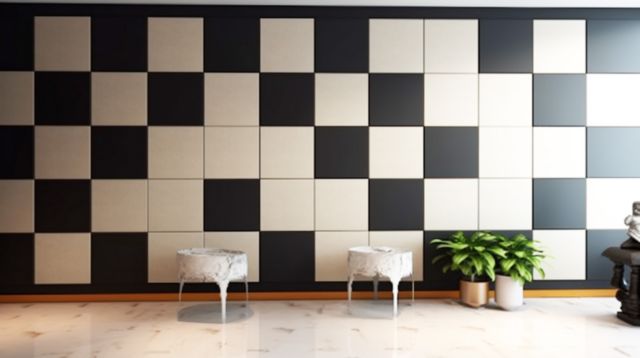
III. Types of Acoustic Cloth
When it comes to selecting an acoustic cloth for your cloth panels, there are various options available to you, each offering specific characteristics and acoustic performance benefits. Let’s take a look at different types of acoustic cloth wall coverings depending on their application:
A. Cloth Materials for Acoustic Panels
- Acoustical Cloth: Acoustic clothing is specifically engineered for optimal sound transmission while offering protection for an acoustic panel. Engineered to have minimal impact on sound absorption, Acoustical cloth is frequently utilized in professional audio settings like recording studios and home theaters where sound clarity is of utmost importance.
- Soundproofing Cloth: Soundproofing cloth goes beyond improving sound transmission to block external noise, often made out of dense materials that act as an effective barrier against airborne soundwaves, thus limiting leakage and improving isolation. It can be found in places that need high levels of privacy or noise control such as conference rooms or soundproof booths.
- Transparent Cloth Material: Transparent cloth material is a special kind of acoustic cloth designed to balance sound transparency with visual transparency, allowing sound waves to pass through while maintaining its see-through properties, making it suitable for applications where aesthetics and visibility are equally important, such as glass partitions or noise barriers in open plan offices.
B. Cloth Types for Wall Coverings
- Cloth Wall Coverings: Cloth wall coverings are designed to enhance both the aesthetic appeal and acoustic performance of a space, offering multiple aesthetic and acoustic benefits simultaneously. The cloth wall panels come in various colors, patterns, and textures for customization and integration into different interior design styles – not only improving sound absorption but also adding elegance and class into an atmosphere.
- Acoustic Fabric Cloth: Fabric acoustic cloth panels offer both aesthetics and sound absorption properties to meet all acoustical performance needs in auditoriums or restaurants, among other spaces where both aesthetics and sound quality play an equally vital role. Acoustic fabric cloth’s transparent structure enables its use for multiple design options that meet sound acoustics specifications, making this an excellent option.
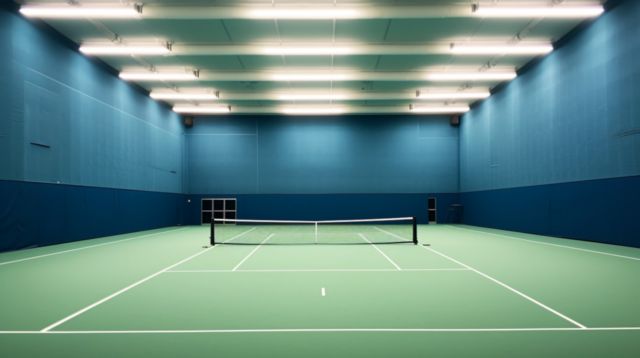
IV. Acoustic Performance of Different Cloth Types
Selecting cloth materials for acoustic panels can have a major impact on their sound-absorbency and diffusion capabilities, as each fabric type brings its own set of attributes that contribute to overall acoustic performance of a space. Let’s investigate how various cloth types affect sound absorption and diffusion as well as examine their pros and cons when building these panels.

V. How to Select Cloth for Acoustic Panels
Choosing an appropriate acoustic panel cloth involves many considerations. To find something that meets both aesthetics and functionality needs, it’s key to select a material which satisfies both requirements. Here are a few key things you should keep in mind when making this choice:
- Acoustic Performance: When selecting cloth as an acoustic panel material, its main aim should be to enhance sound absorption and diffusion. As part of your assessment of its acoustic performance, consider its sound transparency as well as the ease with which sound waves pass through it. Look out for specially tailored cloth materials designed to maximize optimal acoustic performance.
- Durability: Cloth acoustic panels should use fabric that can withstand regular usage and potential wear and tear, resisting fading, tearing and staining so they retain their aesthetic qualities and acoustic properties over time.
- Aesthetics: When selecting cloth panels wall to use in visible spaces, aesthetics should always be taken into account. Choose one that complements your overall interior design aesthetic as well as factors like color, pattern, and texture to ensure seamless integration of the cloth in the room.
- Functionality: Additionally to considering acoustic performance and aesthetics, take note of the functionality of your panel cloth. Is it easy to clean and maintain? Are there any special features, like fire resistance or antimicrobial properties? Assessing these aspects will ensure its long-term usability.
- Budget: Keep in mind your budget constraints when selecting cloth for acoustic panels. There is an array of choices available at various price points; quality materials should always be prioritized over cost when making decisions about material selection, but the key is finding an arrangement that aligns with your financial requirements.
By considering all these factors carefully, you can select an acoustic panel cloth that fulfills both your acoustic needs and design aesthetic preferences.
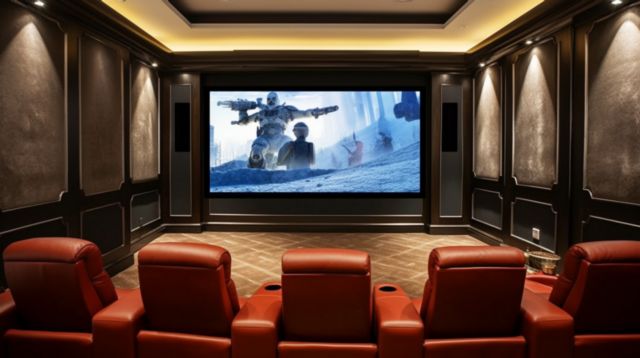
VI. Enhancing Acoustic Performance With Cloth
Cloth can serve multiple functions beyond sound absorption and diffusion; here are a few techniques you may wish to consider:
- Optimizing Soundproofing: For spaces where noise control is essential, soundproof cloth can be combined with other soundproofing materials to form a more effective barrier against external noise. Layering soundproof cloth over dense materials like mass-loaded vinyl or acoustic foam will boost its soundproofing capacities even further.
- Cloth Wall Art: Cloth is another effective tool to improve both acoustic performance and visual aesthetic in any space. By incorporating cloth into hanging cloth wall art pieces, it becomes possible to introduce additional sound absorption properties while adding decorative flair – perfect for strategically placing these decorative pieces to target areas where sound reflection needs to be reduced.
Explore these innovative techniques to further optimize the acoustic performance of your space while using cloth in creative, eye-catching ways.
VII. Conclusion
In this blog post, we examined the acoustic performance of various types of cloth for use as cloth panels walls. We explored its importance across various settings before delving deeper into using different kinds of fabric to improve sound quality.
After discussing various applications of acoustic cloth, we explored its various types. This included discussing materials for acoustic art panel, wall covering and ceiling panel, as well as cloth types used to construct panels.
We analyzed how each cloth type affects sound absorption and diffusion, detailing both its advantages and disadvantages when used as part of acoustic panels. By taking into account factors like performance, durability, aesthetics, functionality and budget considerations when choosing your material type for use as an acoustic solution, you can select an optimal cloth type to meet your acoustical requirements.
Further, we explored additional techniques to maximize cloth’s acoustic performance. By optimizing soundproofing and including cloth in hanging wall art installations, you can optimize sound absorption and diffusion while adding an aesthetic element.
Selection of an appropriate cloth ceiling cover is essential to attaining optimal sound quality and creating an aesthetically pleasing environment. By considering performance, durability, aesthetics, functionality, budget and any potential adverse environmental factors when making this important choice you can make an informed decision that aligns with your specific needs and requirements.
Consider that selecting the best cloth for acoustic panels can have an incredible effect on the acoustics of any space, so take time to carefully research and select one. With the appropriate textile, your space can become both visually stunning and acoustically satisfying!
Thank you for taking time to read our blog post on the acoustic performance of various types of acoustic cloth for use on acoustic panels, and we hope it has been informative and beneficial in your quest to create memorable sound experiences.
